Uniforms used by the Royal Navy in Malta
– Officers –
Number 5: Double breasted, eight gilt buttoned blue/black doeskin jacket & trousers with a blue-black cap with a white cap cover (white cap cover only worn with 5’s in the winter in the Mediterranean during wartime but worn in summer in the UK in peace time). Black shoes without toecaps, white shirt and collar, and a black tie. This was, from 1939-1943, the only authorised uniform for officers in temperate climes, for best and for work wear.

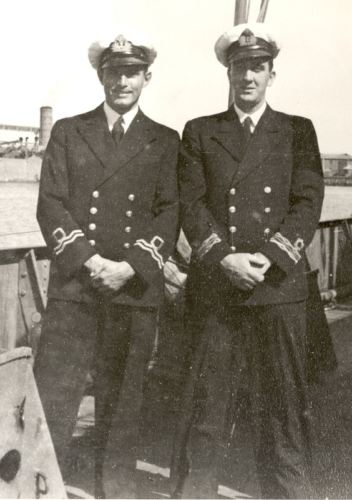
Number 10: Single breasted fully buttoned white tunic with gilt buttons (similar to that worn by Class I & III ratings in number 5’s) and rank displayed on stiff shoulder boards, white covered cap, and white leather shoes. This was the equivalent of number 5’s in tropical waters, although was not really worn afloat.
Number 13: An informal tropical uniform; white shirt with rank displayed on shoulder boards, white shorts, white socks, white canvas shoes, cap with white top.
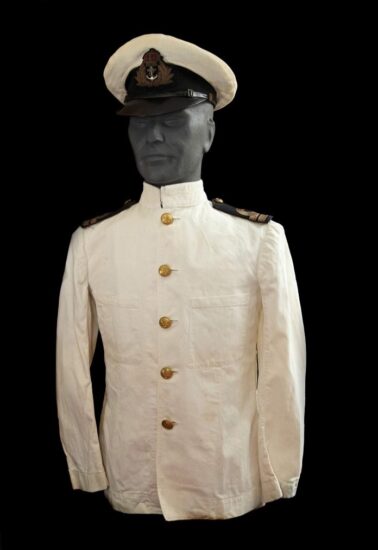
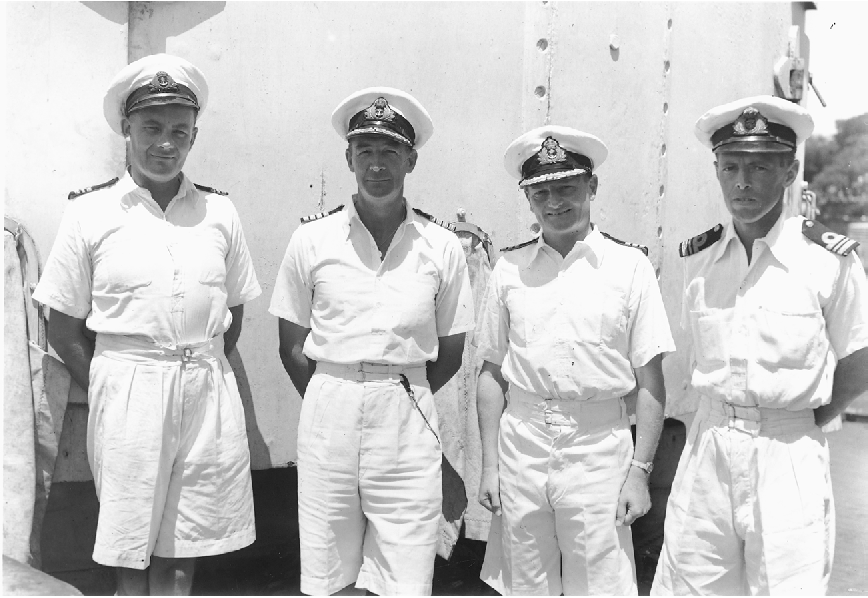
– Chief Petty Officers, Petty Officers and Seamen –
Unlike the Army, uniforms of the Royal Navy did not undergo anywhere near as many changes through the war as the army. However, this is counteracted by the number of uniforms that existed! There were four different uniform types depending on rank and rate: Officers, Class I (CPO’s), Class II (Rating’s Dressed as Seamen AKA Square Rig), and Class III (Petty Officers of Six Months Experience or Confirmed in that positions, and Rating’s not dressed as seamen such as Stewards, Cooks, Sick Berth Attendants). The Class I and Class III ratings wore very similar uniforms, the only difference being that Class I ratings wore their trade on their collars, whilst Class III wore the rank and ratings on their sleeves. Both Classes wore six button double breasted serge jackets and ordinary trousers, with a peaked cap and a shirt and tie.
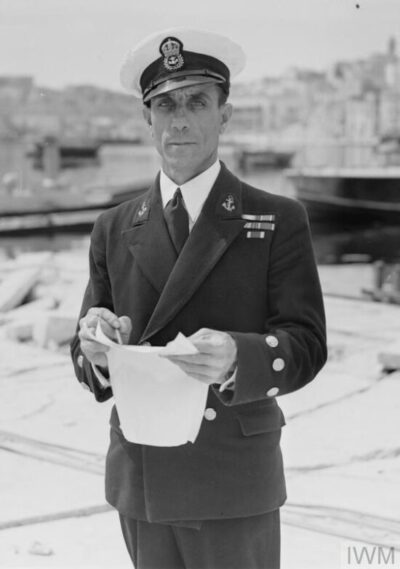
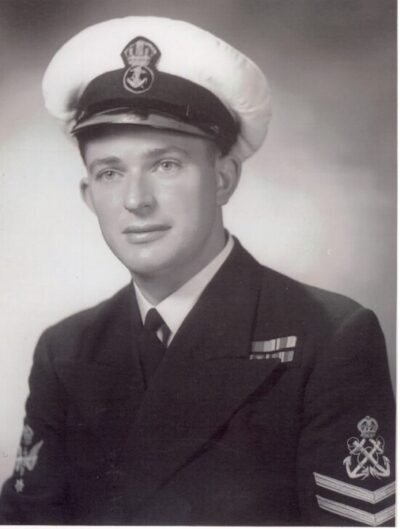
Class II ratings wore square rig consisting of Bell-Bottomed Trousers, a jumper with either gold or rank & trade insignia depending on order of dress, collar which was tied around the waist under the jumper with three creases forming a W on the back into a M), a blue top or white top peak less cap with HMS tally tied around it with a bow above the right eye (not regulation, but everyone did it), a blue jersey or white T-shirt like “flannel” or “white front” was worn under the jumper. Around the neck, over the jumper but under its neck flap was a black silk – a square of material folded seven times and sewn at one end to form a loop of material. This was tied at the front in a bow by a cotton tape. A white lanyard was underneath the neck flap of the Jumper, looped around the silk, and then inside the jumper. Black, toecap less and un-hobnailed boots were worn. In the UK blue topped caps all year round, with a white front worn in summer, a blue jersey in Winter. Square rig was also worn with a white top cap and a white front in Winter in the Mediterranean.

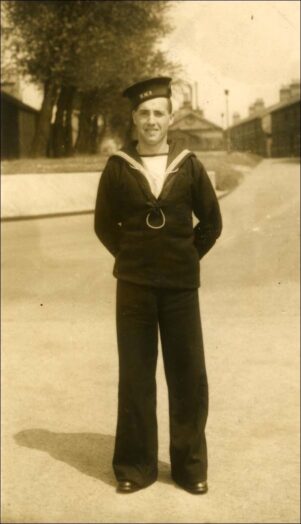
No5 Drill suit, medals.
Occasions: In place of No.1s when whites (tropical uniforms) are being worn.
Class I: white single breasted, stand collar uniform with brass buttons and two unpleated patch pockets without flaps on the breast (like normal shirt pockets), white trousers, white canvas shoes, cap with white cover. Trade was gold, and worn above the buttons on the cuff, if worn at all. Class III similar, but with blue insignia on the sleeves. Class II wore a white version of the square rig, with blue denim “hemming” at the bottom of the jumper and at the ends of the cuffs. Worn with a white front and a white topped cap. A separate collar wasn’t worn, as the collar on the jumper mimicked the separate collar worn with the temperate uniform. This was worn with white bell bottoms and white, canvas shoes. Trade and rating insignia was blue.
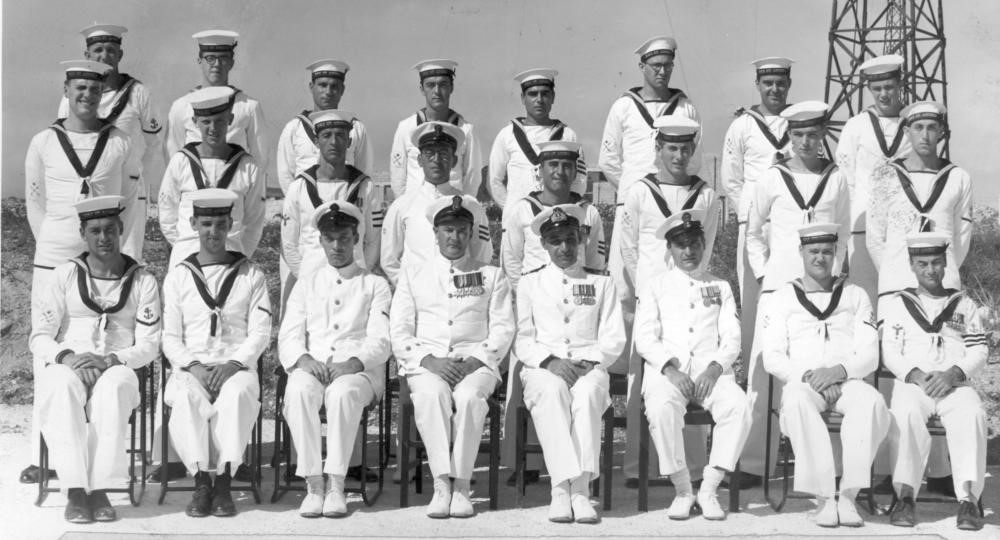
No9 Tropical singlet, shorts and caps, long blue socks.
Occasions: As ordered in tropical waters.
Class I: white shirt with two breast pockets, white shorts, white socks, white canvas shoes, cap white cover. Class III but with black boots and socks, unless a Petty Officer in which white shoes and socks are worn. Class II wore the white front, white shorts, white topped cap, black boots and socks (unless a PO). Rank sometimes worn in blue on left sleeve.
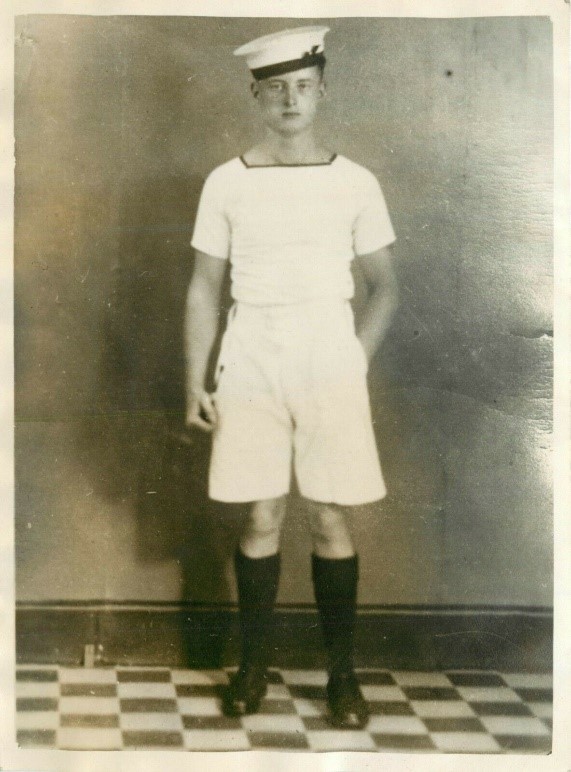
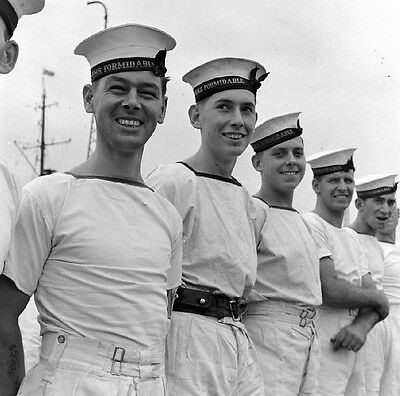
– Equipment –
On ship, the most that would be worn is a blue money belt, worn over the shorts or bell bottoms and under the jumper (on land in tropical dress a white money belt was worn), and an admiralty gas mask bag (which strapped around the waist and was worn on the hip, as distinct to the army gas mask bag), plus anti flash hoods and gloves if necessary. Tin helmets often replaced the rating and officers’ caps when at action stations.
– Other uniforms –
The most common uniform seen in addition to those listed above is Khaki drill, which was worn by officers in North Africa and authorised for wear in the far east. Officers often had a khaki cap cover to go with the uniform. These were as many and varied as the Army KD’s, however, as a rule, officers wore a bush shirt with RN buttons and trousers, ratings KD shirts and shorts (RN shorts having no field dressing pocket). When serving on land, army battledress was worn with soft shoulder boards.
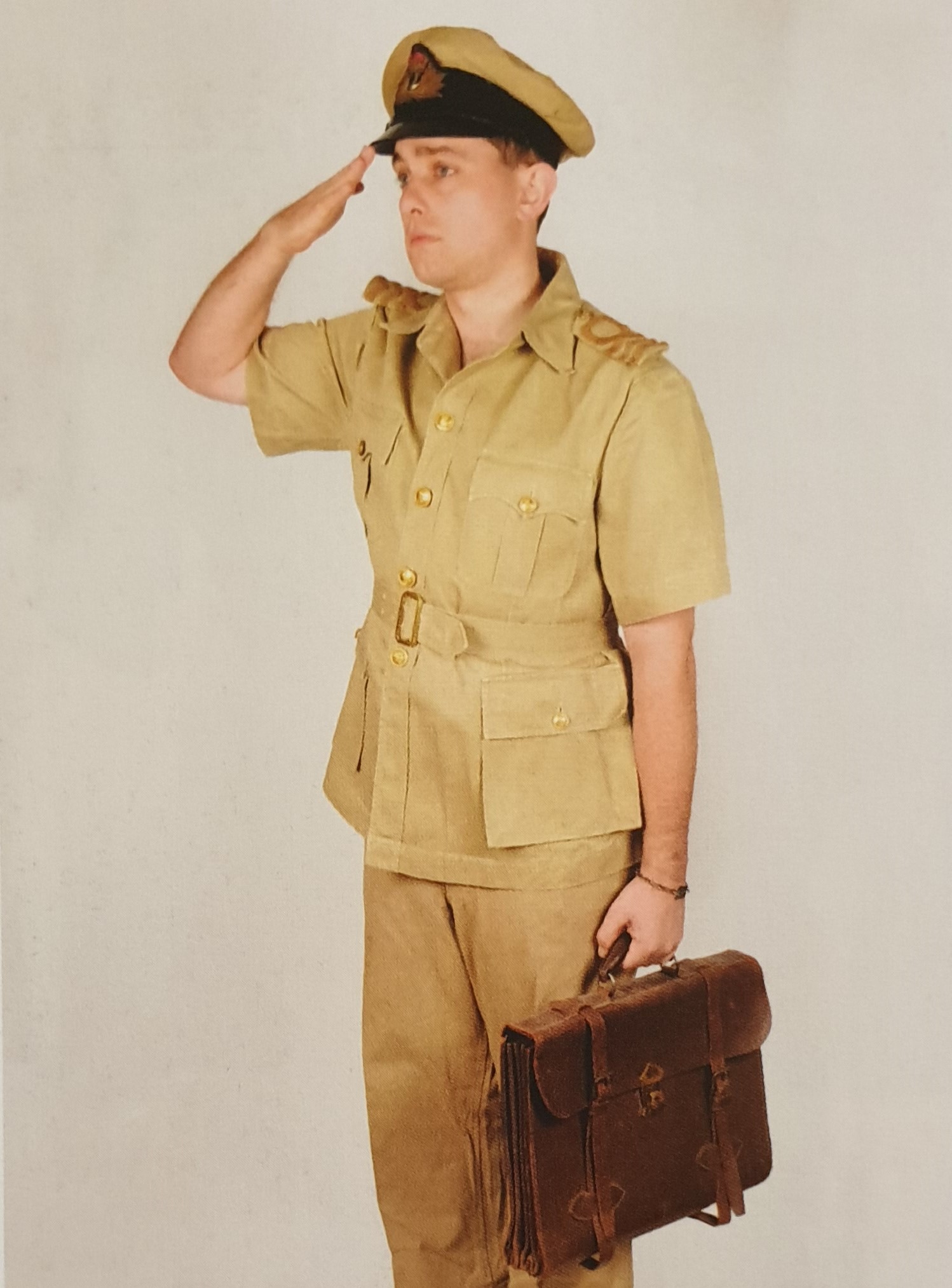
(Source: Royal Navy Uniforms 1930-1945. M.J. Brayley)
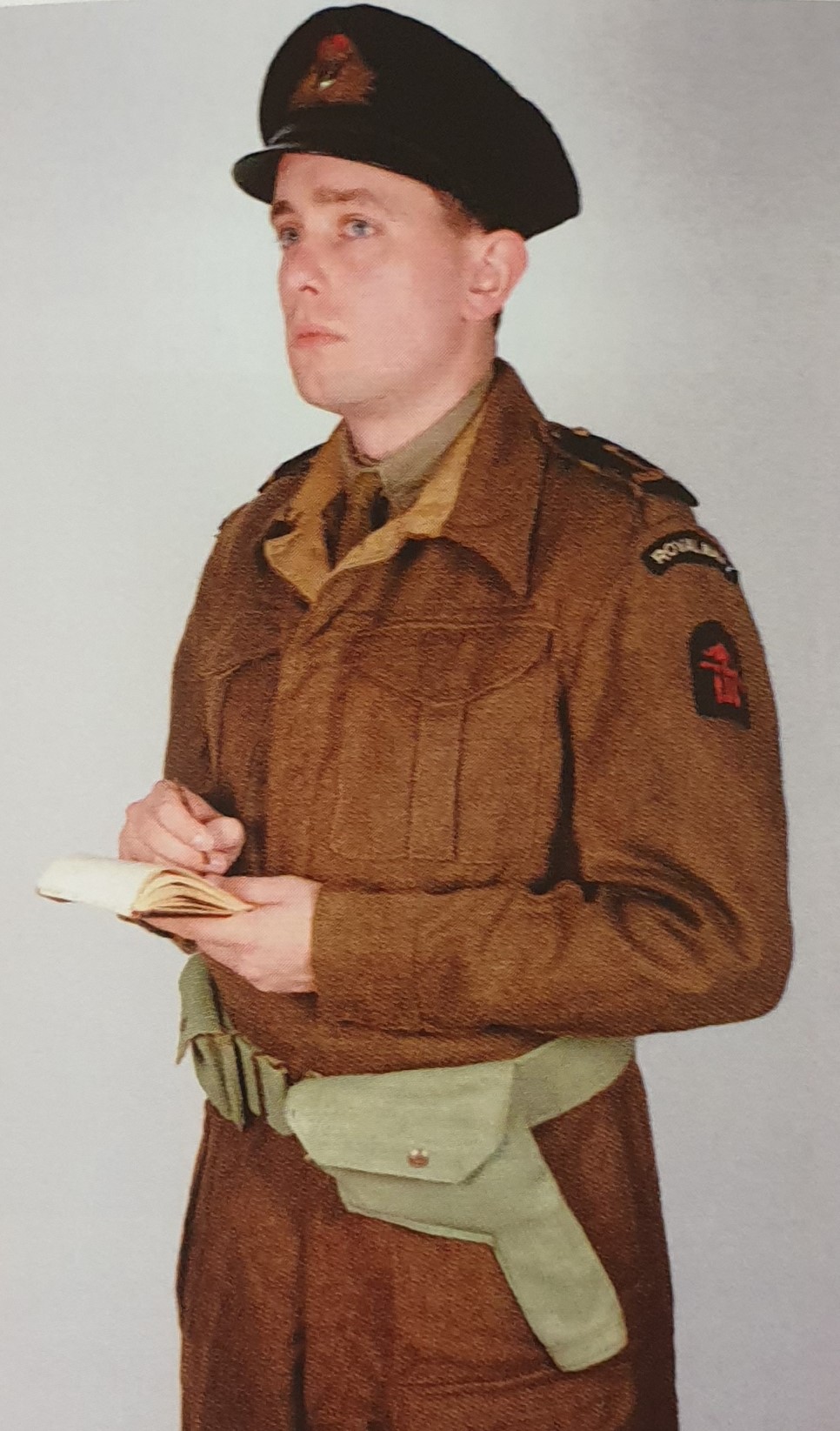
(Source: Royal Navy Uniforms 1930-1945. M.J. Brayley)
Click here for more information on Royal Navy Ranks and service allowances
Operation Pedestal – The Santa Marija convoy
After trying to deny Malta to the British by siege and bombing for two years, the Axis had inflicted great privations upon the Maltese people who had withstood stoically everything thrown at them, and in recognition of this were collectively awarded the highest British civilian award, the George Cross in April 1942.
By this time Malta had become the most bombed place on earth, and the situation was fast becoming serious with almost constant attacks by Axis aircraft based in Sicily and North Africa, and Malta’s chances of survival were low. Not only were the military needs in a critical state but also those of the entire civilian population who faced starvation. Reserves of food, fuel, ammunition etc. were sufficient for only a couple of months more, and for aviation fuel only a couple of weeks. If Malta could not be resupplied it would have to surrender.
In June 1942 there was an attempt to carry out a large-scale resupply of Malta with two convoys, “Harpoon” ,escorted part of the way by a battleship, two aircraft carriers and four cruisers east from Gibraltar, Simultaneously, “Vigorous” from Alexandria consisted of eleven merchant ships escorted by eight cruisers and forty others headed west from Alexandria. The capital ships withdrew before the narrow channel between Sicily and Africa due to the threat from the Italian Battle Fleet., leaving the anti-aircraft cruiser HMS Cairo and thirteen escorts. The results were: six merchant ships sunk, three damaged, seven turned back to Alexandria. The Royal Navy suffered five damaged ships and four others were sunk. Only two supply ships arrived in Malta but no fuel oil got through.
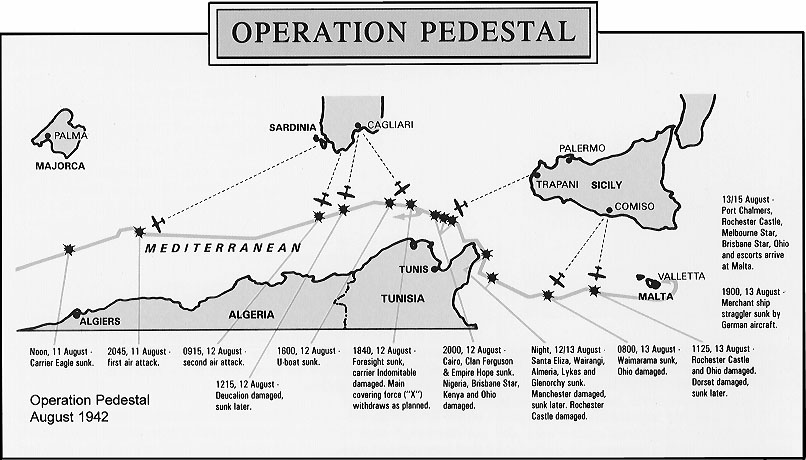
By the end of June, ammunition, fuel and food supplies in Malta were nearly exhausted. Livestock was slaughtered to reduce the need of extra feeding and for the meat to be served at the number of ‘Victory Kitchen’ established around the island to supply a meagre diet to the inhabitants. At that time, to stretch the supply of flour, the Maltese mixed flour with potato peelings, making a sort of coarse brown bread. The situation became so dire that bread once again became white when there were no more potato peelings to add to flour. Malta would be forced to surrender if these badly needed supplies were not delivered before September. The Royal Air Force had only a few weeks’ supply of aviation fuel. Submarines were pressed into service to run supplies of aviation fuel, anti-aircraft ammunition and torpedoes, while the Admiralty’s fast minelayer HMS Welshman was converted to run through the blockade carrying fuel to keep the remaining aircraft operational. The First Lord of the Admiralty A. V. Alexander and Admiral of the Fleet Dudley Pound, the First Sea Lord agreed with Churchill that the loss of Malta would be a disaster for the British Empire and possibly leading to the loss of the Mediterranean, if not the war!
The largest convoy to date was assembled at Gibraltar, codenamed Operation Pedestal, using ships taken from the Far East and from the Home Fleet. It consisted of 14 transports, including the large oil tanker SS Ohio. These ships were protected by powerful escort and covering forces: 44 warships, including three aircraft carriers; HMS Eagle, Indomitable and Victorious and two battleships HMS Nelson and Rodney, the cruisers HMS Naiad, Nigeria, Cairo and Manchester, some 25 destroyers and escorts, as well as oilers with their own corvette escorts, to provide refueling for the convoy escorts. A diversionary operation was staged from Alexandria.
Great Britain did not have tankers capable of 16 knots, so President Franklin Delano Roosevelt replied to his ally’s request and turned over the SS Kentucky and SS Ohio to Britain for use in supplying Malta.
The merchant ships consisted of SS Ohio and SS Kentucky. Operation Pedestal was intended as the last attempt to deliver a vital relief to the besieged island, but it was to be at heavy cost. It was attacked from the sea, but also by air. Some 146 German and over 450 Italian planes took part in the action against the convoy. Out of the 14 merchant ships sent, nine were sunk. Moreover, the aircraft carrier HMS Eagle, one cruiser and three destroyers were sunk by a combined effort from the Italian Navy, Kriegsmarine and Luftwaffe. Nevertheless, the operation though costly in lives and ships, was vital in bringing in much-needed war materials and supplies.
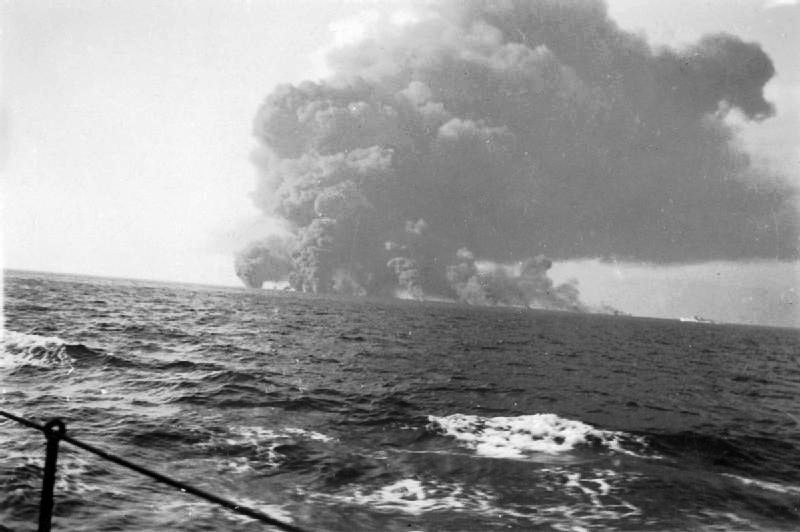
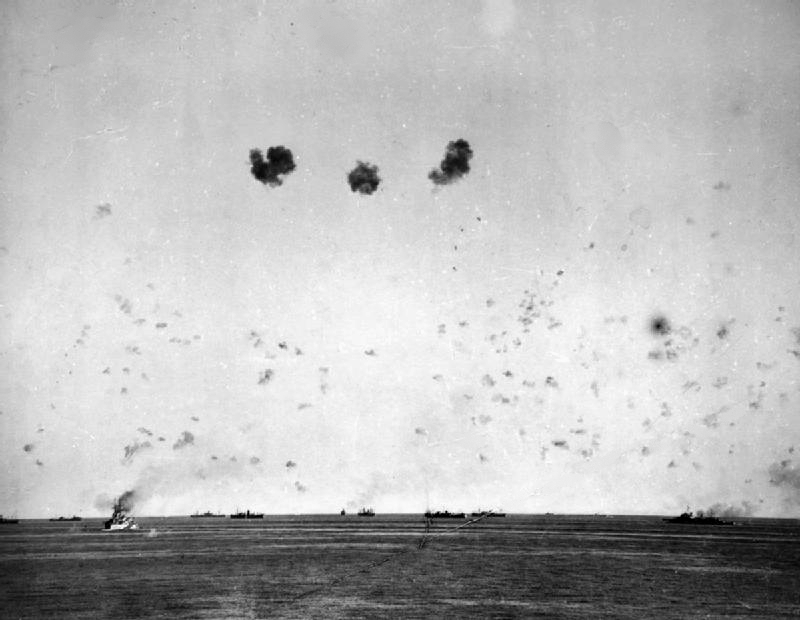
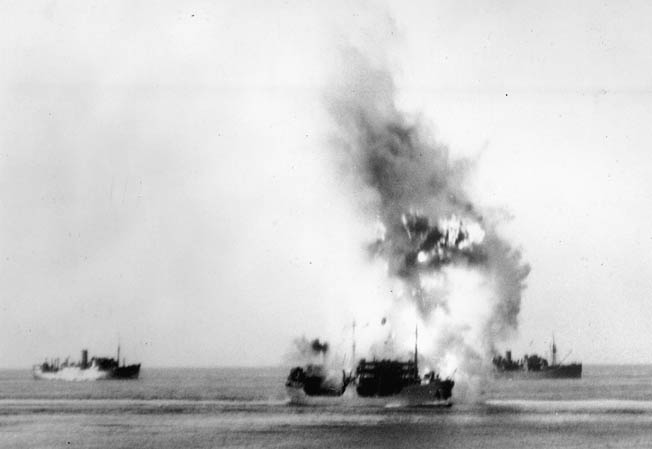
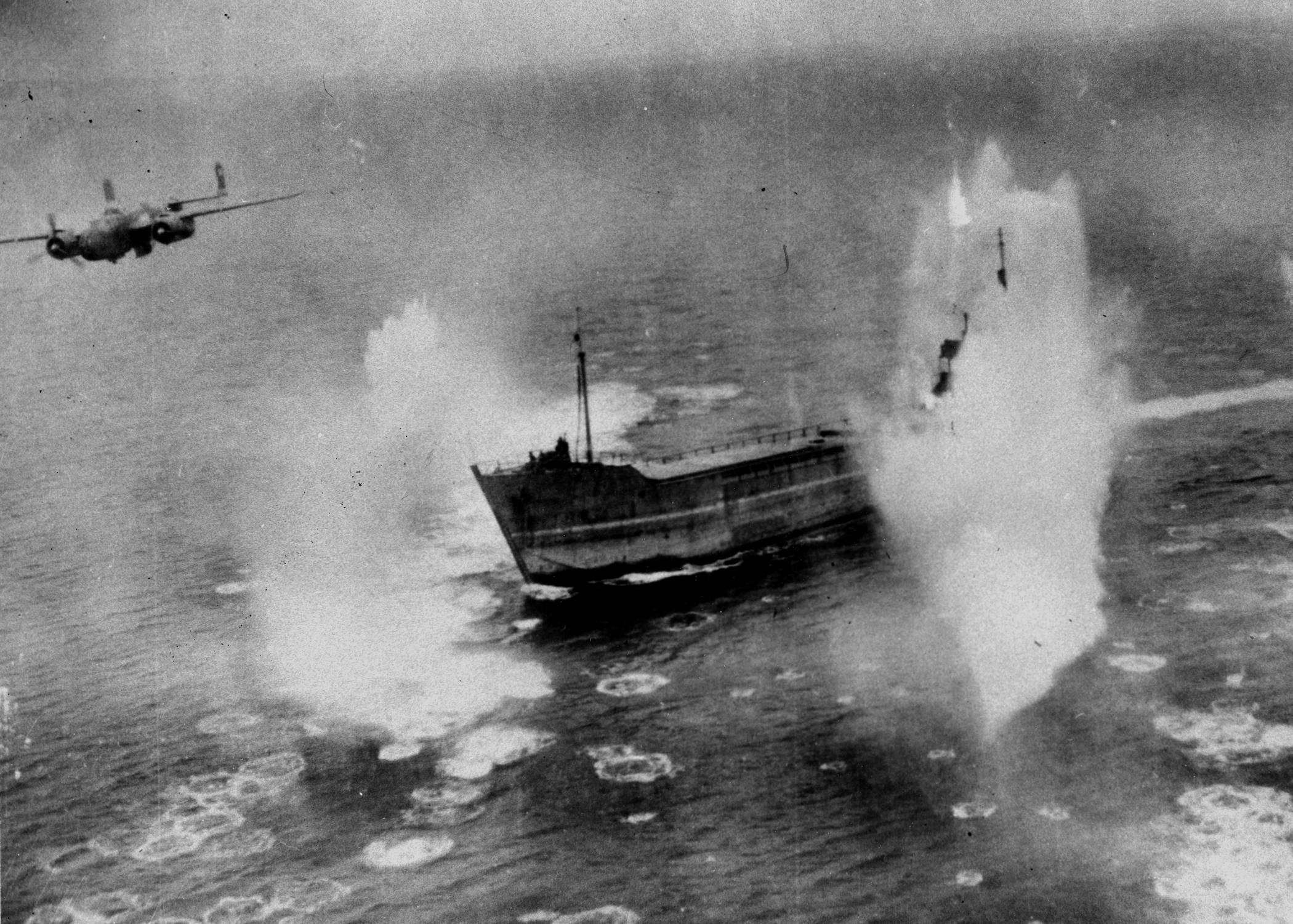
The Ships
Force F (The merchant ships and escort)
Merchant Ships: SS Almeria Lykes (ammunition, bombs, general cargo), MV Brisbane Star (refrigerated cargo), MV Clan Ferguson (ammunition, explosives, fuel), MV Deucalion (aviation fuel), MV Dorset, MV Empire Hope (ammunition, aviation fuel, MV Glenorchy (aviation fuel), MV Melbourne Star (ammunition, oil, kerosene, aviation fuel), SS Ohio (petroleum products), MV Port Chalmers, MV Rochester Castle, SS Santa Elisa (aviation fuel), SS Waimarama, MV Wairangi (ammunition, fuel).
Escort Destroyers: Amazon, Keppel, Malcolm, Venomous, Wolverine.
Force X (close escort under Rear Admiral Burrough)
Light Cruisers: Cairo, Kenya, Manchester, Nigeria (flagship). Destroyers: Ashanti, Bicester, Bramham, Derwent, Foresight, Fury, Icarus, Intrepid, Ledbury, Pathfinder, Penn.
Force Z (distant escort under Vice Admiral Syfret)
Aircraft Carriers: Eagle, Indomitable, Victorious. Battleships: Nelson (flagship), Rodney.
Light Cruisers: Charybdis, Phoebe, Sirius.
Destroyers: Antelope, Eskimo, Ithuriel, Laforey, Lightning, Lookout, Quentin, Somali, Tartar, Vansittart, Westcott, Wilton, Wishart, Wrestler, Zetland.
Aftermath
A revived Malta changed the balance of fortunes in North Africa preceding the Second Battle of El Alamein. Malta based aircraft regularly attacked Axis supply convoys known through Ultra intercepts. In August 1942, with Malta still besieged, 35% of Axis convoys to North Africa did not get through. In September, with Malta resupplied, Allied forces sank 100,000 tons of Axis shipping, including 24,000 tons of fuel destined for the Afrika Korps.
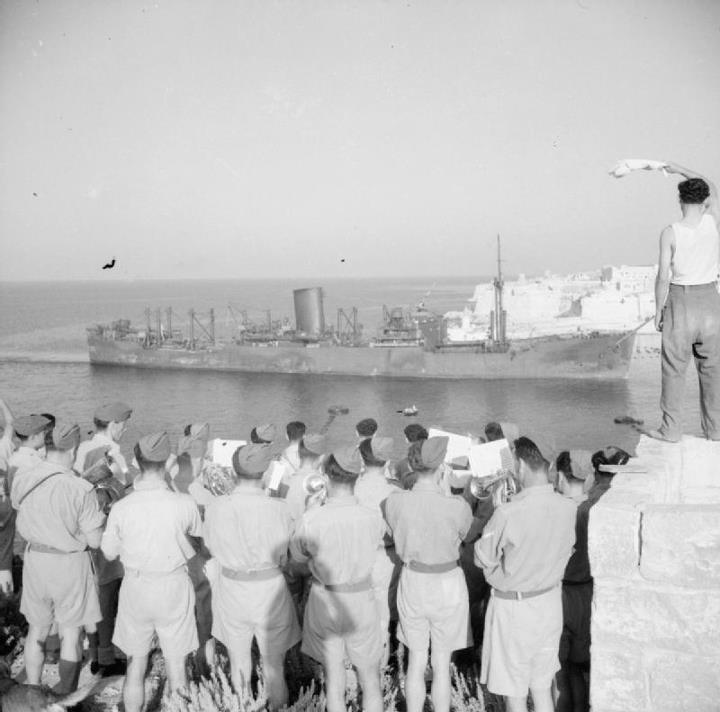
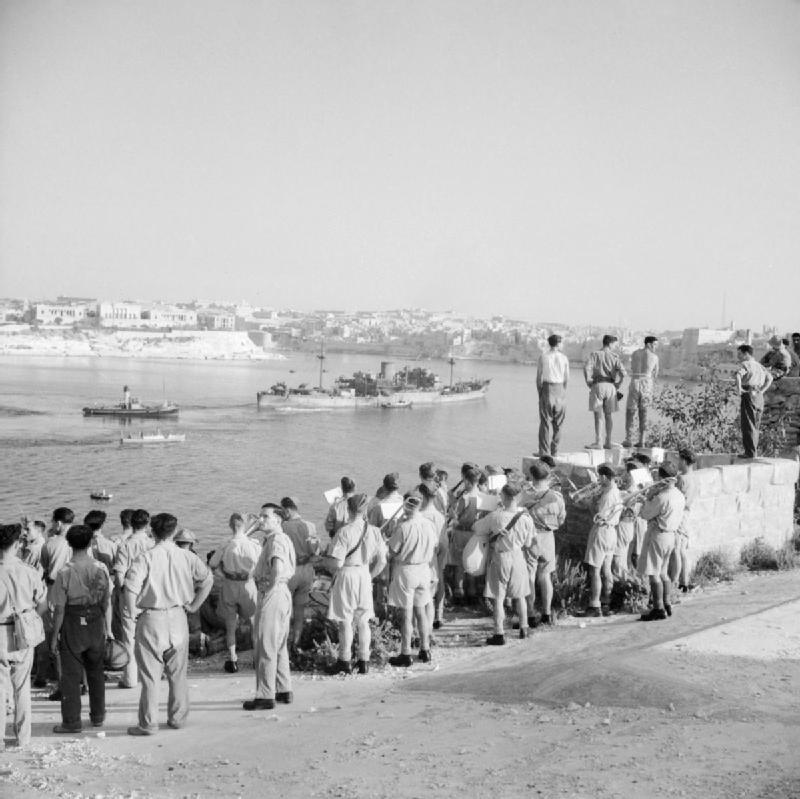
With the fuel transported by road from the North African ports to the front line, it was again targeted by the Desert Air Force by day and the S.A.S. by night, reducing the amount arriving at the front to a trickle. The effect of this was that the Afrika Korps at El Alamein was changed from being an attacking force into a defending force. Rommel did not have enough to attack and hoped he had enough to defend for long enough when the inevitable British assault came.
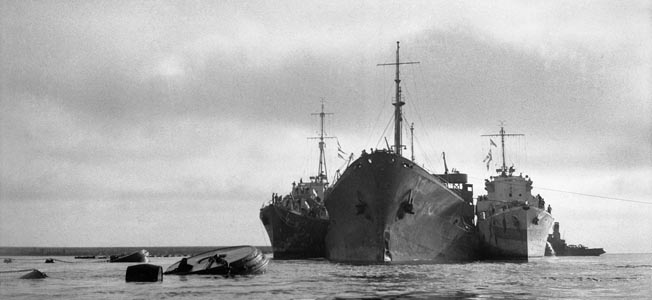
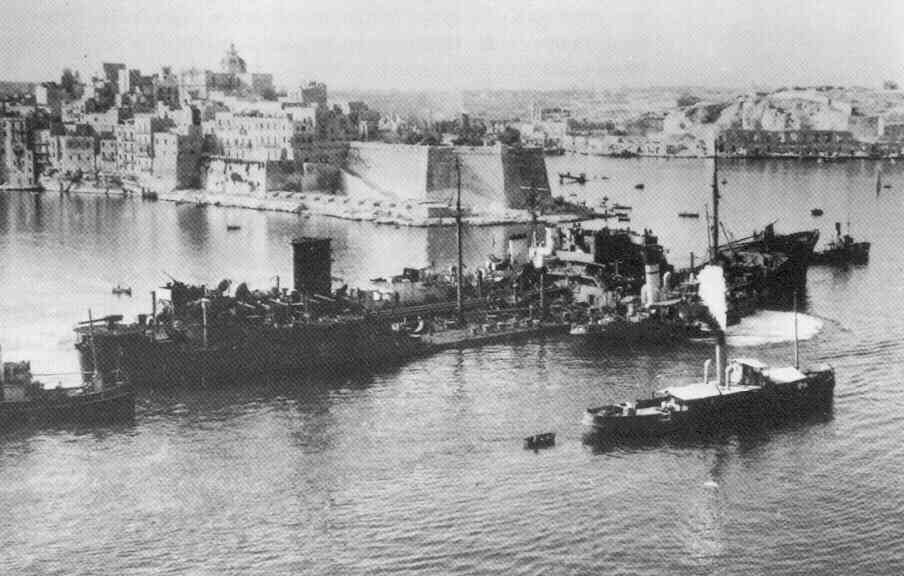
The assault (called the second battle of El Elamein) came on October 23 1942, and resulted in the Afrika Korps being pushed back, and finally retreating, ultimately to Tunisia where, in May 1943, they surrendered in the Cap Bon peninsular area, where operation Pedestal had suffered its greatest losses nine months earlier. Irony or poetic justice? The seeds sown by the Pedestal operation had given birth to victory in the desert.
North Africa was thus cleared of Axis forces which in turn cleared the way for the invasion of Sicily in July 1943 which was launched from North Africa and Malta by the Allies.

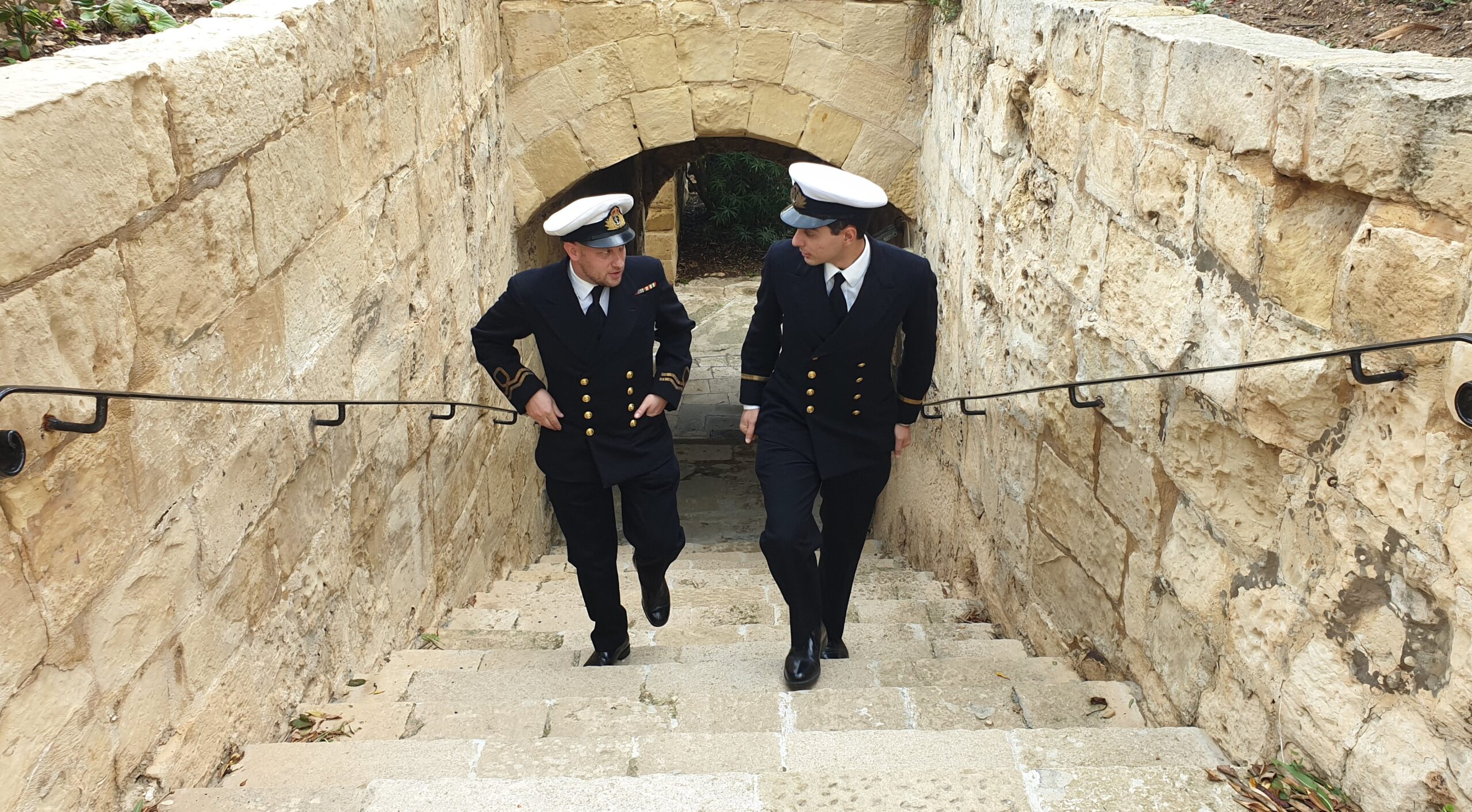
Awards and recognition
Vice-Admiral Syfret was knighted (KCB) for his “bravery and dauntless resolution in fighting an important Convoy through to Malta in the face of relentless attacks by day and night from enemy submarines, aircraft, and surface forces.”
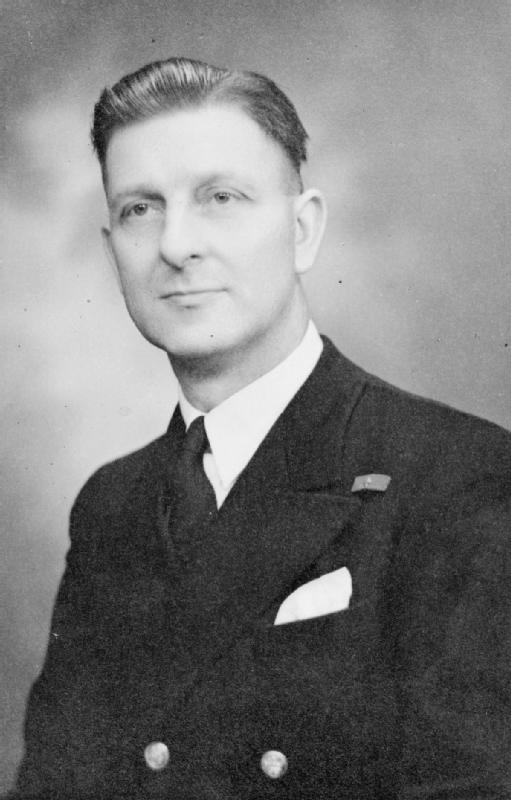
The Master of the tanker Ohio, Dudley William Mason was awarded the George Cross for showing “skill and courage of the highest order and it was due to his determination that, in spite of the most persistent enemy opposition, the vessel, with her valuable cargo, eventually reached Malta and was safely berthed“. Fifteen other crew members of the Ohio also received awards, ranging from D.S.O.(1), D.S.C.(6) and D.S.M.(8).
The captains of each of the other four ships to arrive in Malta received the D.S.O. Many other officers, crew members and commanders of both the Royal and Merchant Navies, received military awards ranging from the Distinguished Service Order and Conspicuous Gallantry Medal down to Mentions in Despatches for “the bravery and intrepidity shown in ferrying the merchantmen to Malta“.
The American Merchant Marine Distinguished Service Medal was awarded to Frederick Larsen Jr. and to Francis Dales for “Heroism beyond the call of duty.” They were American survivors from the merchantman SS Santa Elisa who volunteered to re-board the abandoned Ohio to repair and man one of the anti-aircraft guns.
Through the years Operation pedestal has been mentioned and commemorated in various sources of events and media, of which include the latest Book published by Max Hastings: Operation Pedestal: The fleet that battled to Malta, 1942 and also the Malta Post 70th anniversary commemorative stamp set.
Visit our events section to view the Annual commemorative Operation pedestal Ceremony, that is held at the Grand Harbor area in order to remember the lives lost during the convoy, remembered in presence of distinguished guests and relatives.
Take a glimpse of some of the original footage reels that are available online, describing the struggle of the Operation Pedestal voyage
Acknowledgments:
–Denis. A. Darmanin – for providing the introductory and Operation Pedestal information.
–Colin Micallef – for providing the information on the Royal Navy uniforms section.



